“Many, many years you will be enjoying the magical riding qualities of your handcrafted, high grade titanium frame”, it says on the Pilot website. My own personal experience of titanium frames is that I’m yet to ride one that’s ‘magical’ but I can say with some certainty that in general they’re very nice to ride.
I jumped at the chance to review the Pilot Duro – over the years I’ve been fortunate enough to ride a few titanium mountain bikes and while I’m trying to avoid the tired marketing clichés (such as the ones on the Pilot website), every one of them has been a delight.
For me, this bike ticked a few boxes. I’d never ridden a bike with a gearbox, nor had I ridden one with a belt drive. The Duro also looks brilliant, all swoopy lines and obvious attention-to-detail. At first glance, it’s a great bike and maybe even worth shelling out seven grand for.
The frame is made from high-end titanium. The Pilot website claims that grade 9 and grade 5 Ti alloy tubes are used – I’m not really an expert but it makes a change from the usual ‘aerospace grade’ marketing stuff that is normally trotted out. As well as the off-the-peg geometry, Pilot will let you specify almost any measurements you want, all on the website. There’s also a load of upgrades available, such as carbon components, titanium components, better wheels and the like.
The hydro-formed and double butted top and down tubes are slightly curved in the same direction and visually, it’s a real treat. Graphics have been blasted into the brushed finish and all the little details such as the internal cable routing with sleeves to minimise swearing, beautiful embossed headtube badge and the elaborately-machined rear dropouts give the whole thing a well-made, exclusive feel.
The headtube is nice and short and the gearbox is neatly tucked into the downtube/seat tube junction and held in place by a large amount of titanium plate and sexy welding.
The Pinion-branded crankset slots into the gearbox and that drives the Gates carbon belt, which wraps around the rear sprocket. There’s a neat split in the driveside seatstay that allows the belt to be ‘inserted into’ the frame – you can’t split and re-join a Gates belt, whether that worries you on a long ride is another matter. In my opinion, as a repeat “just leave the bike in the shed after a ride covered in cack” merchant, the relatively maintenance-free and completely rust-risk-free belt is a great idea.
Likewise, the Pinion gearbox is sealed from the elements and apparently only needs an oil change every 10,000 kilometres. For most of us, that’s a service interval measured in years. Not only is it durable, it’s got a massive 636% range, spread across 12 gears which are changed by way of a small grip shift. The gearbox also placed low and central in the frame, so while it’s a couple of kilos in weight, it’s a lump of mass just in the right place. You can also change gear while the bike is stationary, which can sometimes come in handy (more on that later).
If you built the Duro with a rigid fork it’d be almost completely maintenance free and thus a perfect bike (on paper at least) for a UK winter.
The Ride
Our test bike was built up with a mixture of ‘regular’ high end and Pilot-branded components. XT brakes, Fox 32 Step Cast fork, Schwalbe tyres and a Selle saddle. Ours had a 3T stem, Pilot seatpost and a Pilot-branded carbon handlebar that looked normal at first glance but soon proved to be really rather strange once you rode the bike. It just felt like you were holding a pair of garden shears with its odd upwards-and-inwards-but-sort-of-forwards sweep and when you looked down at it to see if it was perhaps fitted backwards, it looked like it was fitted backwards.
That “it’s fitted backwards!” look was so pronounced that I even tried to swap it around and fit it the ‘right’ way to see if it made it feel normal. That made it even more wrong both in looks and feel so I swapped it back around to the ‘less wrong but still quite wrong’ way around.
I know you were probably expecting me to be all gushing and full of praise for this beautifully-designed, boundary-pushing, eternally-shiny mountain bike, weren’t you? Well, it’s a nice bike, but it’s far from perfect.
Let’s start with the good stuff. We’ve already done the durability aspect of the gearbox and the belt drive. The Pinion unit also allows you to spin up steep stuff in a VERY low gear while also having the option to blast down the other side (or along the road) in a very tall gear with a wider range than even Sram Eagle.
The Fox fork is brilliant, as are the XT brakes. No surprises there. The frame too is a work of high-end craftsmanship.
In practice though, the Pinion gearbox, especially if you’re trying to hustle the bike around a tight XC course, can be a hinderance. I have never shouted swear words at a bicycle like I swore at this one and it was all due to the gearbox and its reluctance to change gear. I was already aware that gearboxes such as this one and Rohloffs can be reluctant to shift into a lower gear under load but I think I was taken by surprise somewhat by just how reluctant it was, even under a small amount of pressure. When a climb becomes steeper, or your legs start to hurt and you want an easier gear NOW, the damn thing just won’t shift. You have to back off, COMPLETELY.
In a situation where you know well in advance that a gear change is going to be needed, or when you’re not really bothered about going slow for a few seconds, it’s fine. However trying to ride the Duro fast and efficiently along some twisty, up-and-downy singletrack while trying to ride away from someone else was practically impossible.
Sometimes I’d forget that there was a sharp climb around the next bend, I’d be in a high gear but because I could get into a smaller gear I’d end up stopping while several of my adversaries took advantage and rode past. Which is when the ability to change gear when stationary came in handy. At the very least, it stopped me throwing the bike into a bush. 1-0 to chains and derailleurs.
Maybe riding a gearbox-equipped bike needs more practice, but it was a 6 hour long race and it’s not like the swearing eventually subsided.
The standard frame geometry (fairly standard 69.5 degree head angle, 73 degree seat tube angle doesn’t set the world on fire when it comes to handling or ‘feel’ either – the bike feels quite high in the air which makes steep descending quite a nervous ordeal. Pilot do however offer a fully-custom build service, but you’ll need to pay another 500 Euro for that.
The Pilot Duro seems to be a titanium bike without any of the lovely, high quality ride characteristics that the website claims it has and based on my previous experience of titanium, the characteristics that I was expecting.
My theory (and it’s probably correct in all fairness) is that the sheer amount of metal, whirring gear gubbins and welding around the junction of the chainstays, downtube and seat tube has created a massively stiff, uncompromising ironing board of a frame that reminds me of a very hardcore aluminium frame I used to ride up and down concrete kerbs on. On the plus side, that does mean that it’s very responsive to out of the saddle pedalling – you just need to make sure you’re in the right gear first.
The frame just felt so uncompromising and like it’s not really made of a relatively exotic material. Instead of all-day comfort I was beaten up by it. It made me feel very tired. Maybe it was all the shouting at the gearbox that made me feel weary.
The gearbox and the associated metal to hold it in the frame isn’t particularly light (is that 2-nil to a chains and derailleurs?) so this thing needs to be winched uphill, especially when the super-stiff frame has taken its toll on your back after an hour or so.
Three Things That Could Be Improved
- The Pinion gearbox is a great idea, it’s not quite there yet though!
- The frame is far too stiff, probably as a result of the gearbox and the material needed to hold it in the frame.
- Those Pilot handlebars are far too weird!
Three Things We Loved
- Aesthetically, the frame is gorgeous.
- The Pinion gearbox provides an absolutely massive range of gears.
- Gates belt drive is a brilliant alternative to a chain – needs a compatible frame though!
Overall
The Pilot Duro is undoubtedly an extremely high-quality product in terms of the materials used and the finish. However, the real problems are caused by the lower than basic level of performance of the Pinion gearbox and the way in which that gearbox seems to influence the overall ride quality and weight of the frame. The Gates belt drive is a highlight and is a great alternative to a steel chain but after my experience of the Pinion ‘box I’m only really interested in a belt as an alternative to a chain for a singlespeed.
Specifications
- Frame // Custom butted titanium hardtail
- Fork // Fox 32 Factory Step-Cast 100mm
- Hubs // Pilot, 15mm front, 12mm rear
- Rims // Pilot
- Tyres // Schwalbe Nobby Nic, 2.25”
- Crankset // Pinion
- Shifters // Pinion
- Brakes // Shimano XT
- Stem // 3T
- Bars // Pilot carbon – 710mm width, sort of ‘some’ rise and ‘some’ backsweep
- Seatpost // Pilot carbon, 31.8mm
- Saddle // Selle Flite
- Size Tested // medium
- Sizes available // small, medium, large, extra-large


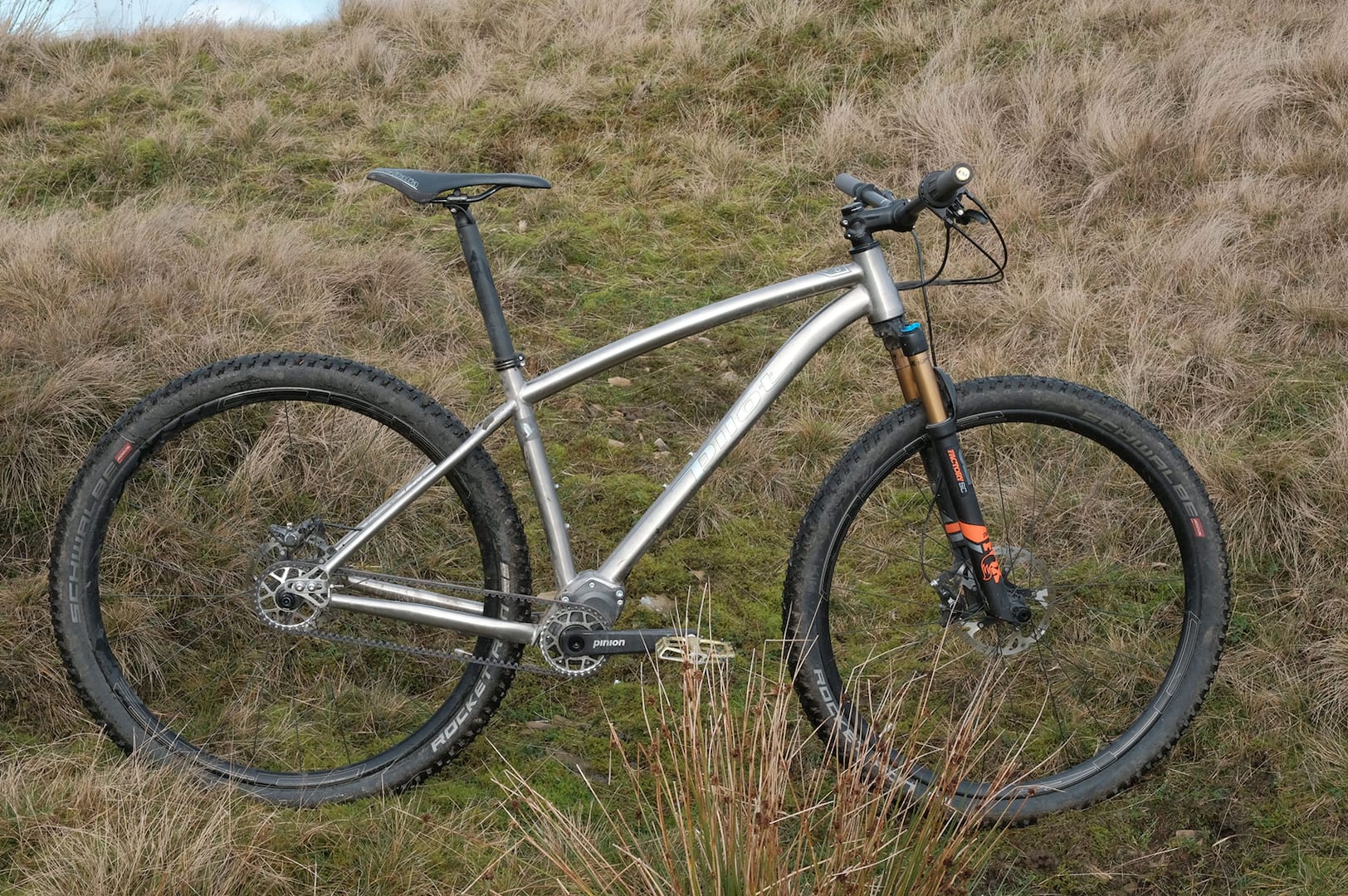
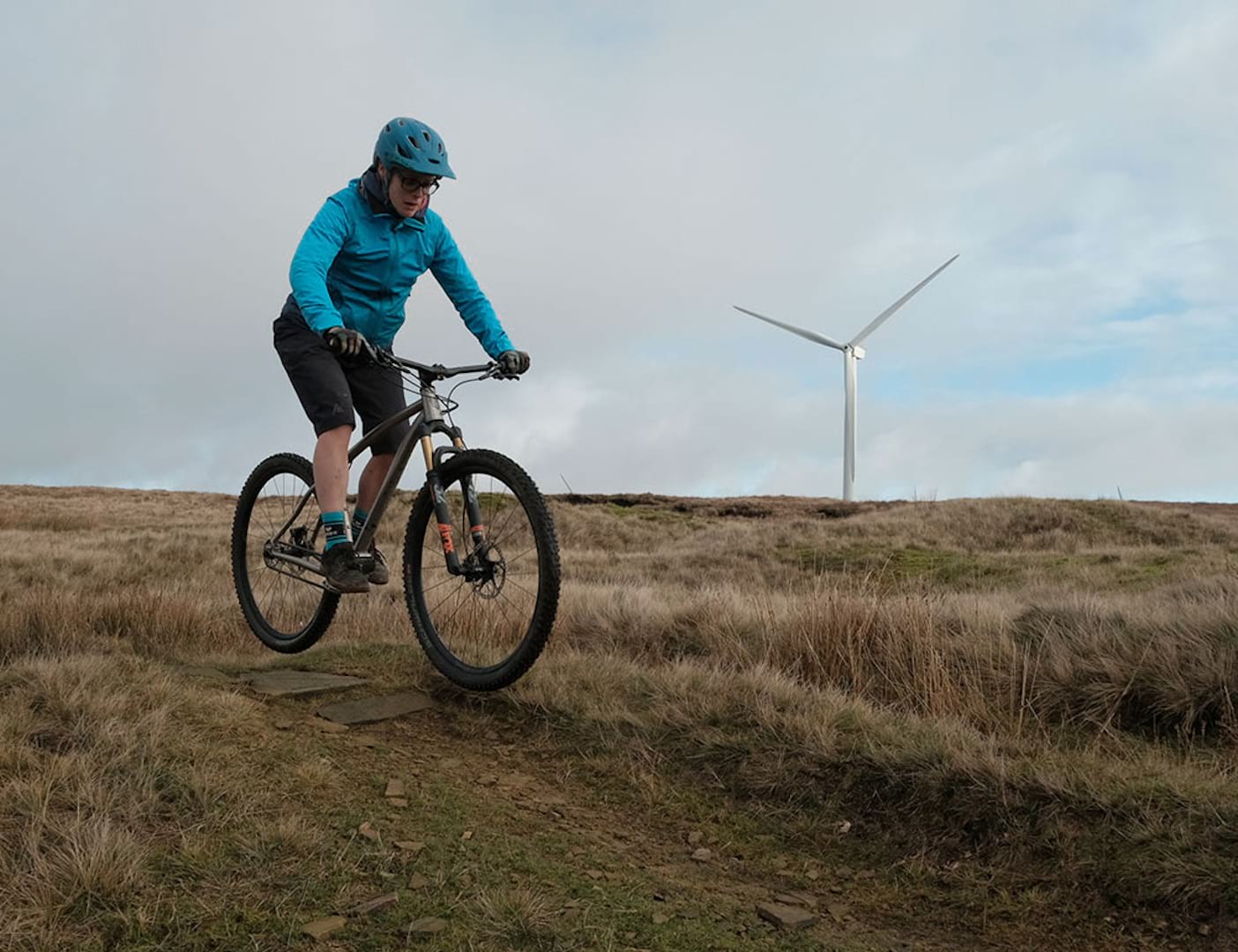
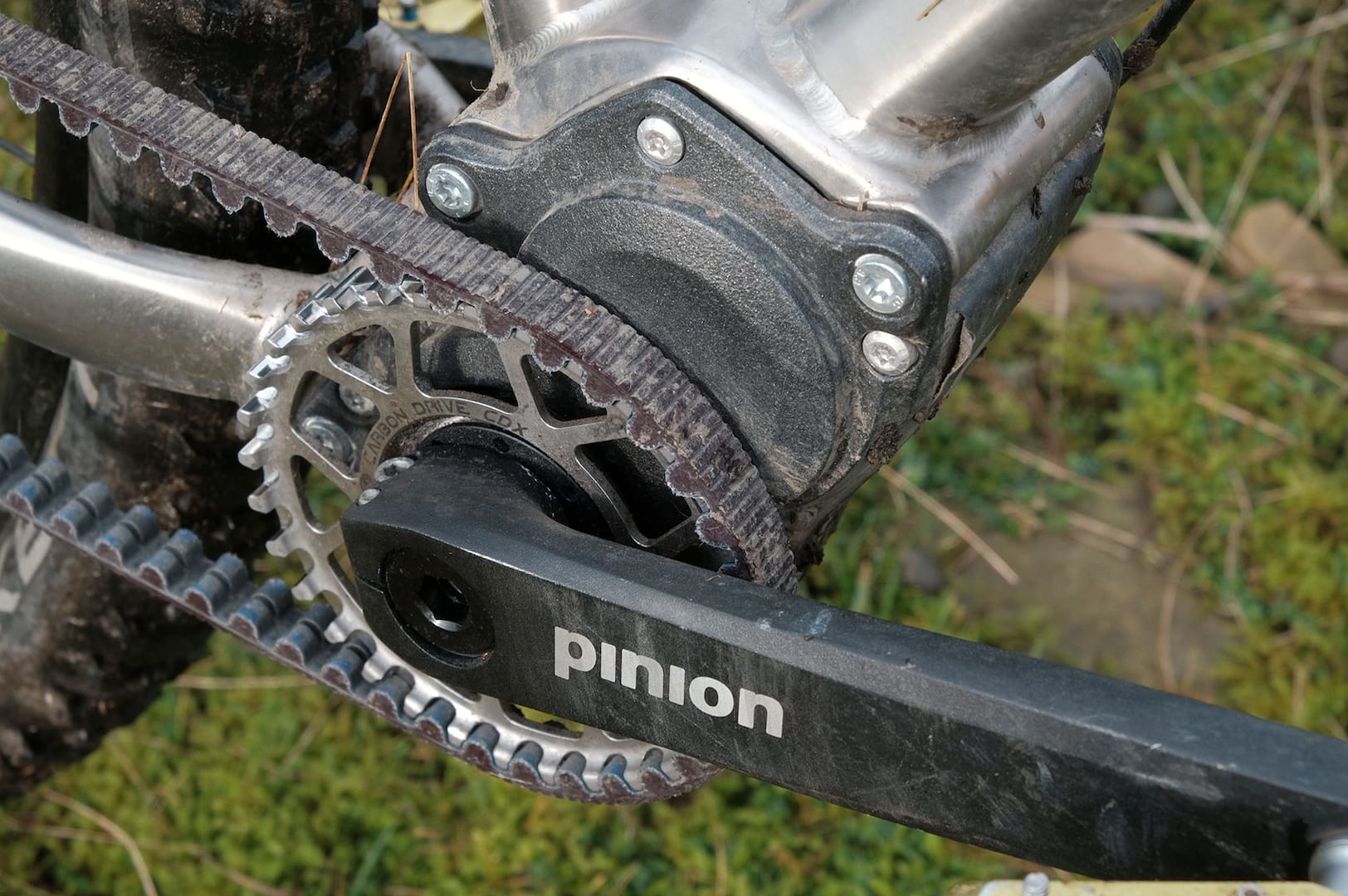




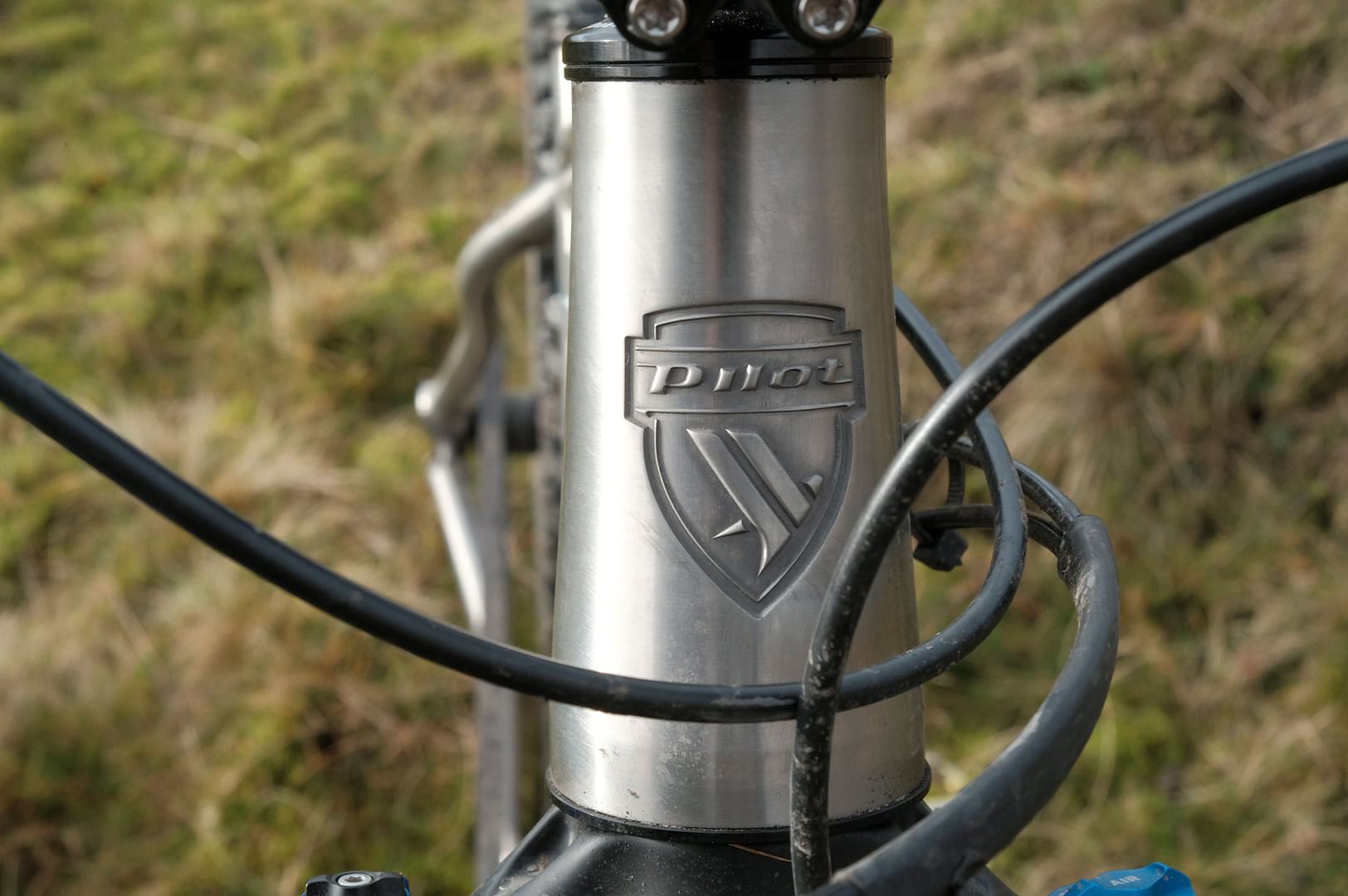

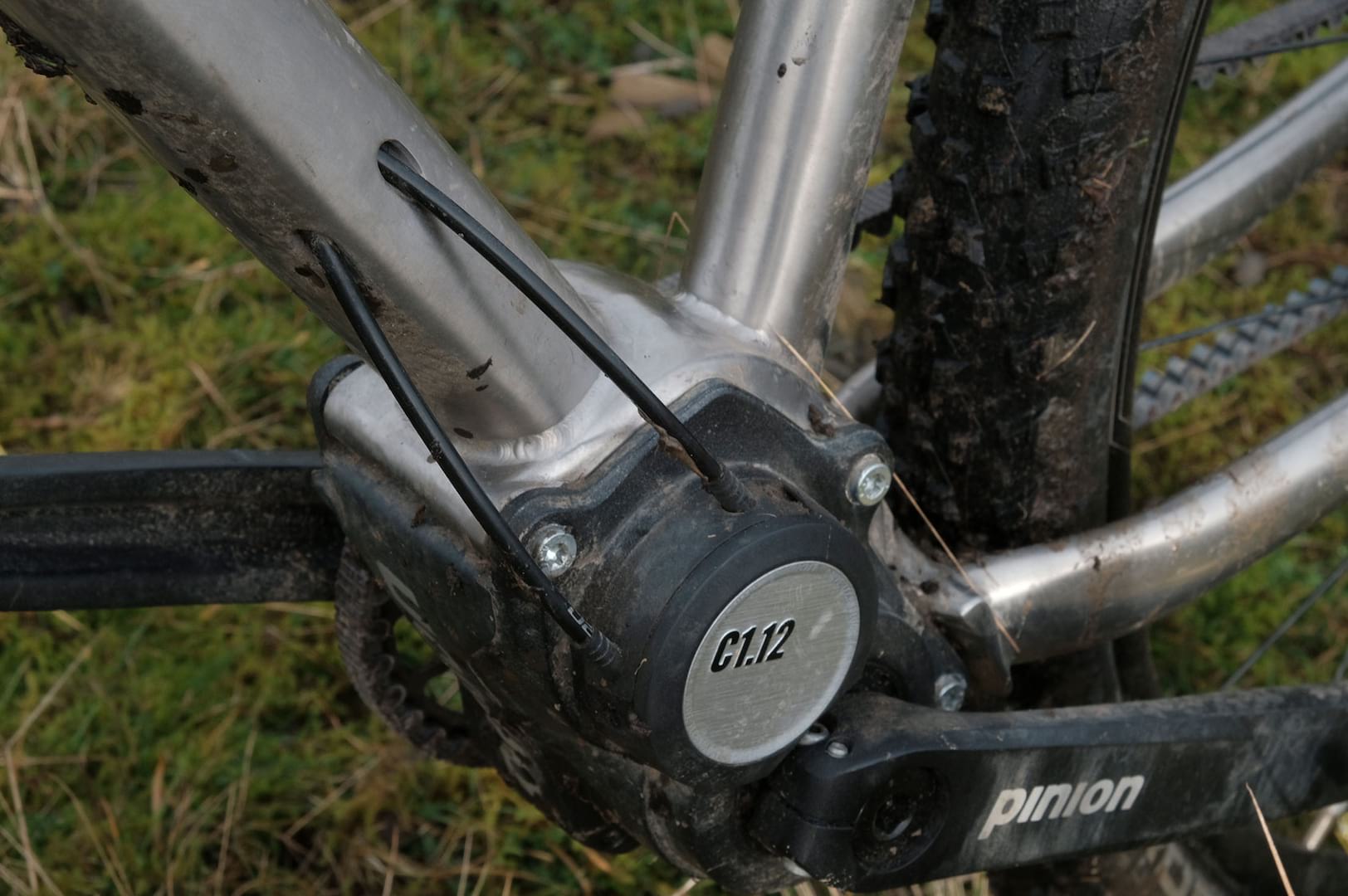
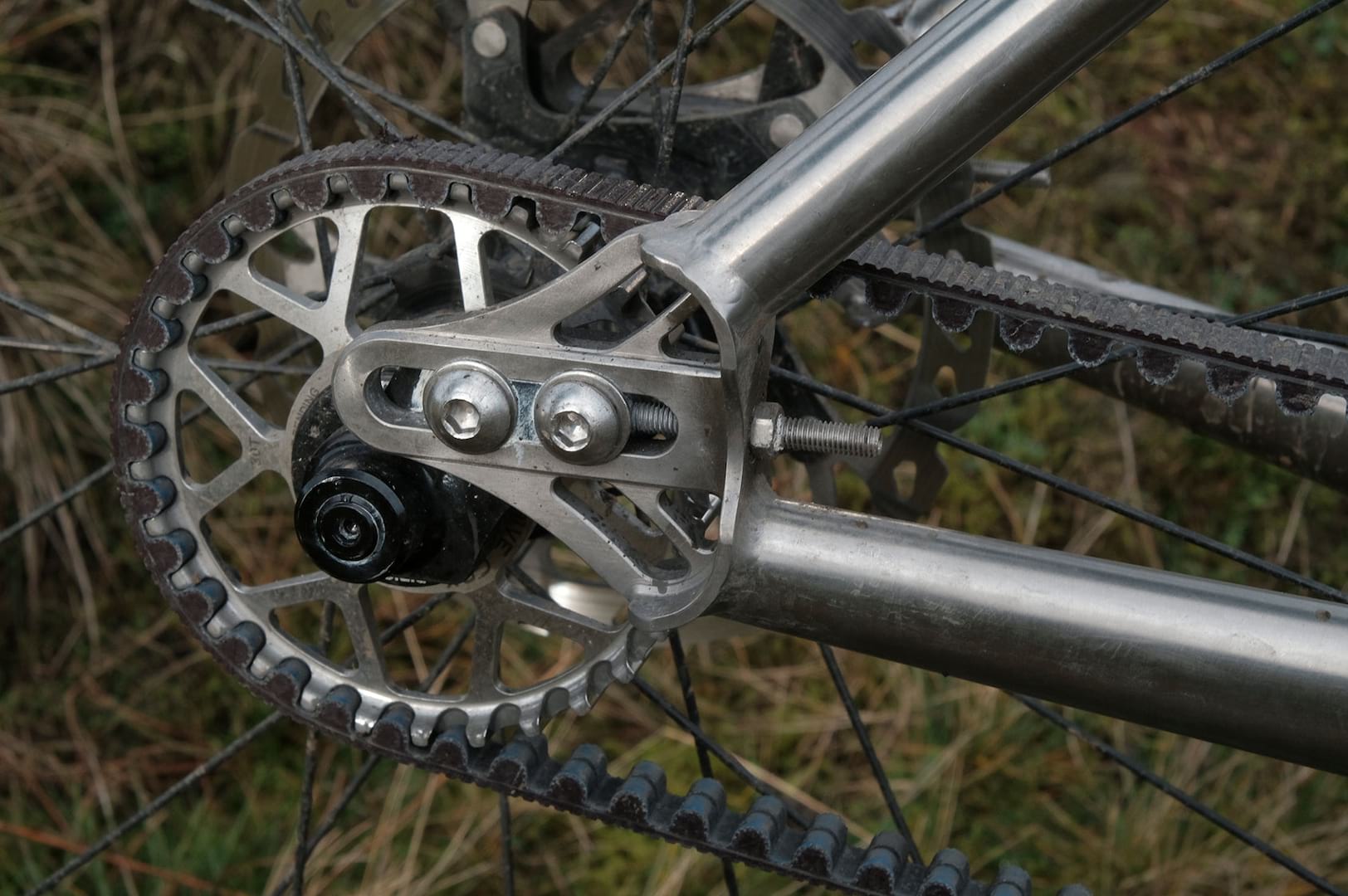
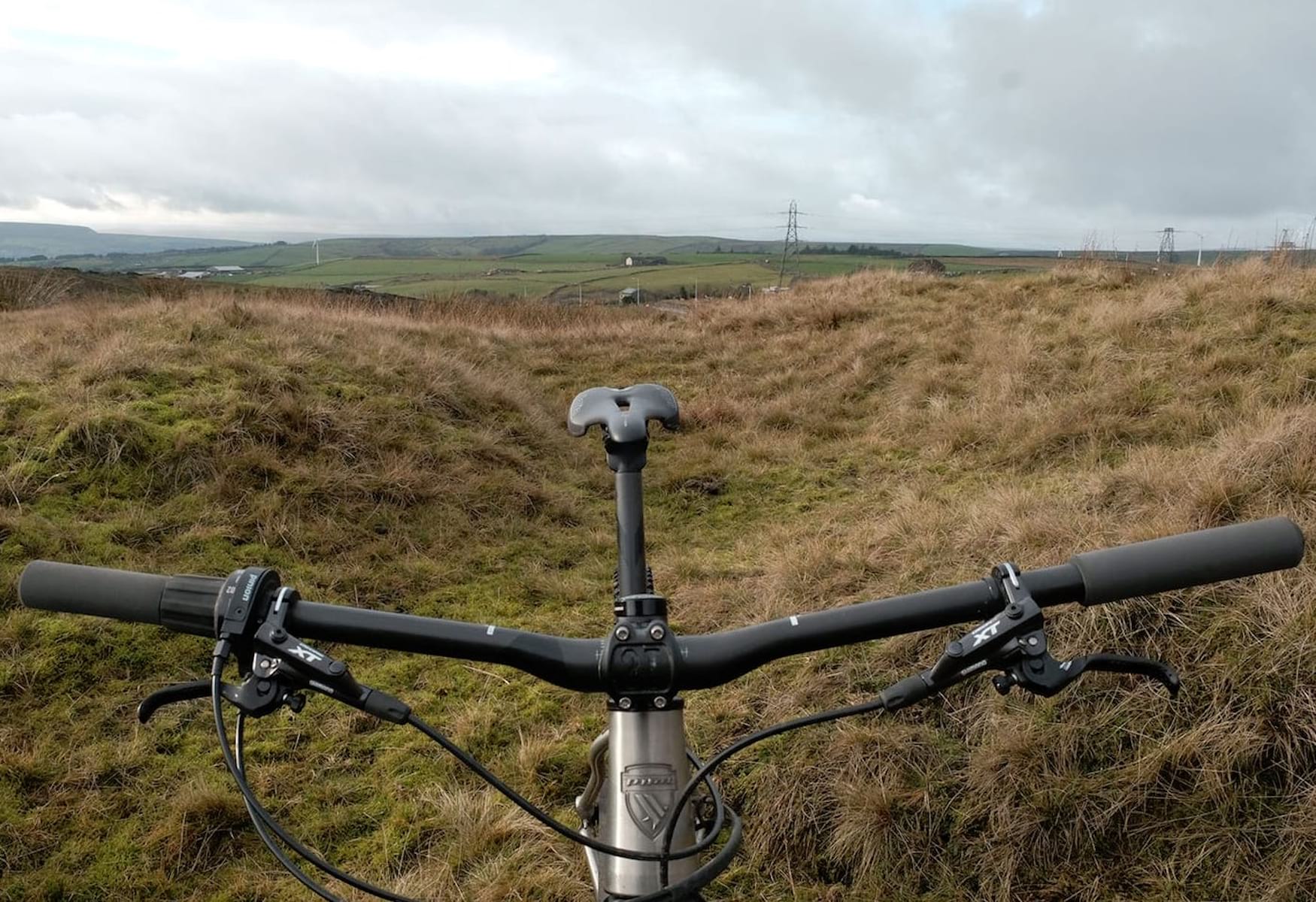

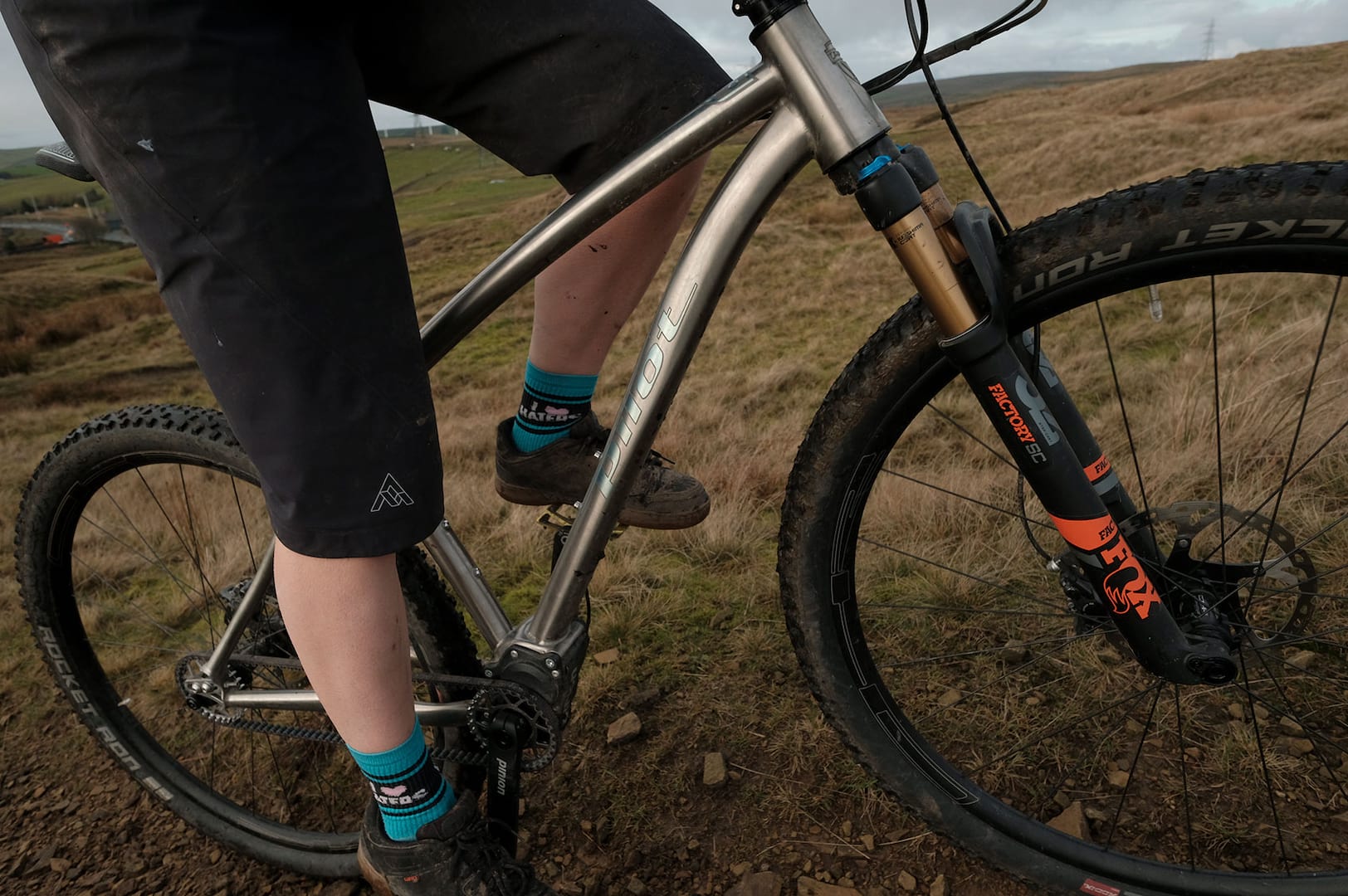
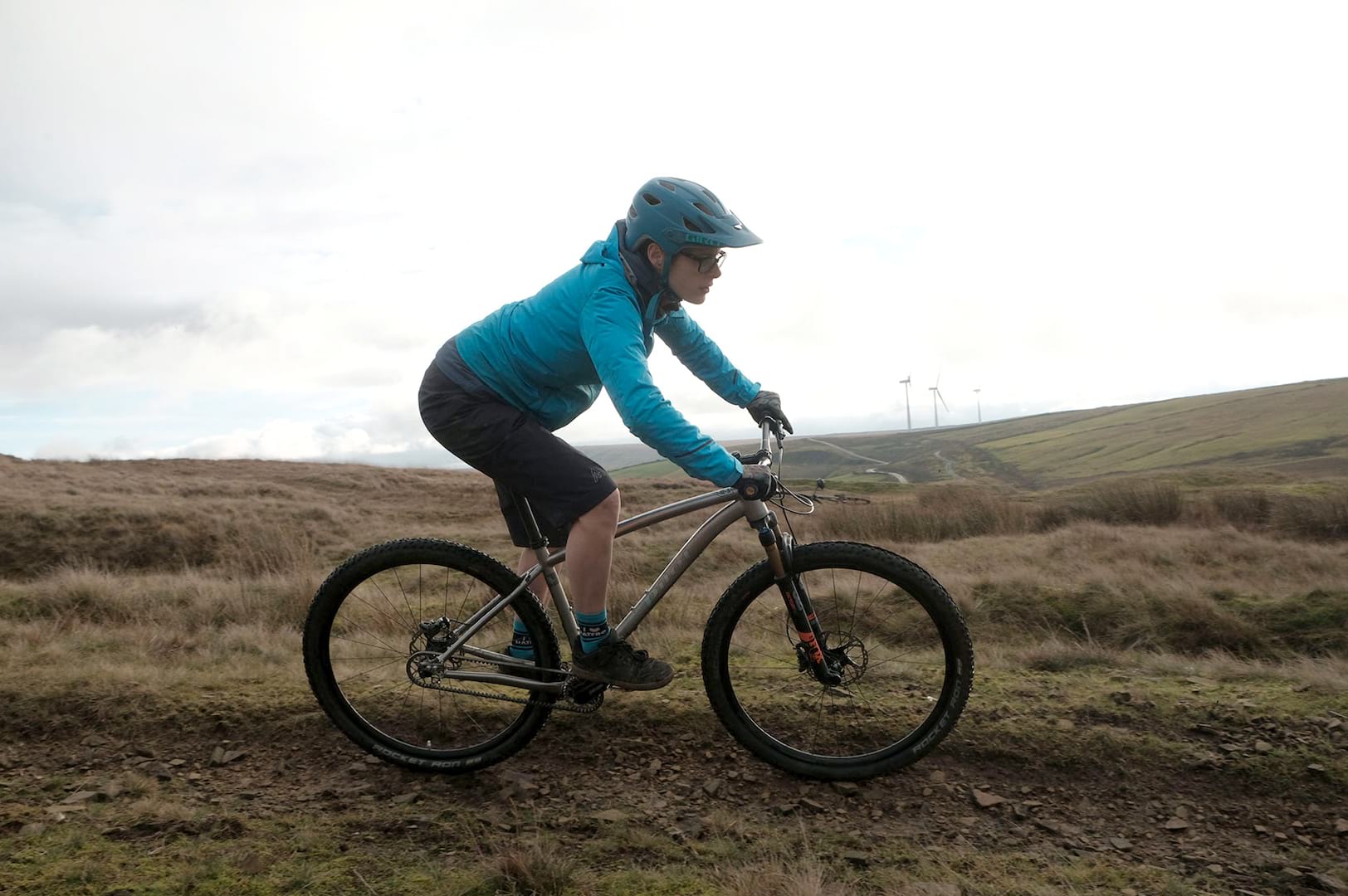


“636% range, spread across 14 gears”
I hope the rest of the review was more accurate
Also, new pinions are much more reluctant to shift when new. after a bedding in period, they are much better
I’ll get one anyway, eBay is selling it for £6.99
After fitting a Rohloff to my TD-1, I understand the frustration of the gear changes. 🙂
SS is much better. 🙂
How does the bike compare to a TD-1 for feel etc.